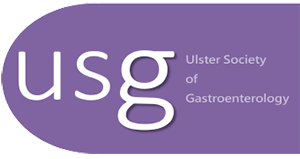A Systematic Review Of The Prevalence Of Fusobacterium Nucleatum In Colorectal Cancer And Association With Cancer Risk And Survival
Authors
Behncke C, Kunzmann, A (Joint first author), Coleman H & Murray LDepartments / Institutions
1 Centre for Public Health, Queens University BelfastPublication Date
Autumn 2017Introduction
A potential role of the gut microbiota, Fusobacterium nucleatum (F.nucleatum), in CRC (colorectal cancer) diagnosis, development and prognosis has been highlighted.
Aims
We aimed to systematically assess the prevalence or abundance of F.nucleatum in CRC samples compared to healthy control samples and the association between F.nucleatum and CRC development and prognosis.
Methods
Electronic databases were systematically searched for studies published until November 2016. Random effects meta-analyses were used to calculate pooled estimates for F.nucleatum prevalence in CRC patients, or tissue, relative to control patients or tissue; and survival in F.nucleatum positive versus negative CRC patients.
Results
A total of 18 studies were included. Meta-analyses indicated a higher odds of F. nucleatum positivity in faecal samples from CRC patients than from healthy controls (n=3 studies, pooled OR 24.11, 95% CI: 7.89-73.65), and in CRC tissue compared to healthy adjacent tissue (n=3 studies, pooled OR 3.65, 95% CI: 2.06-6.46). F.nucleatum also tended to be more abundant in CRC faecal or tissue samples than in healthy controls samples or adjacent tissue. Only one study assessed the association between F.nucleatum and CRC development. A meta-analysis found a non-significant increase in risk of death in CRC patients with high F.nucleatum positivity (n=3 studies, pooled HR High versus low F.nucleatum= 1.78, 95% CI= 0.77-4.10).
Conclusion
A consistent increase in the prevalence and/or abundance of F.nucleatum in CRC faecal or tissue samples was apparent. More evidence is needed to examine whether F.nucleatum can be used as a marker for CRC development or prognosis.
Latest News
Gastroenterology FK Meeting Provision and Challenges
Posted on: 2nd April 2021Latest Event
There are no up-coming events.E-Publications
Download our latest Documents


